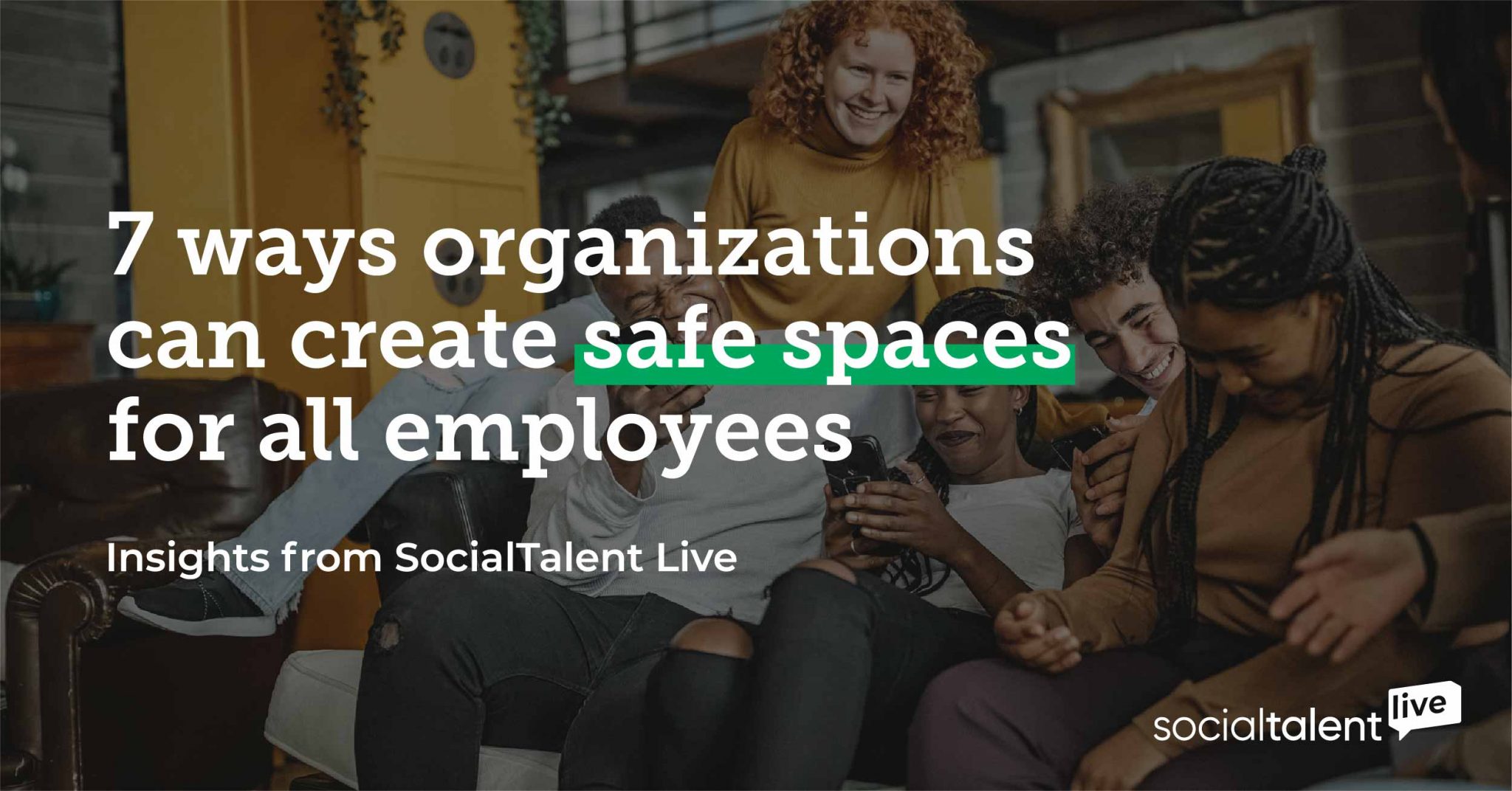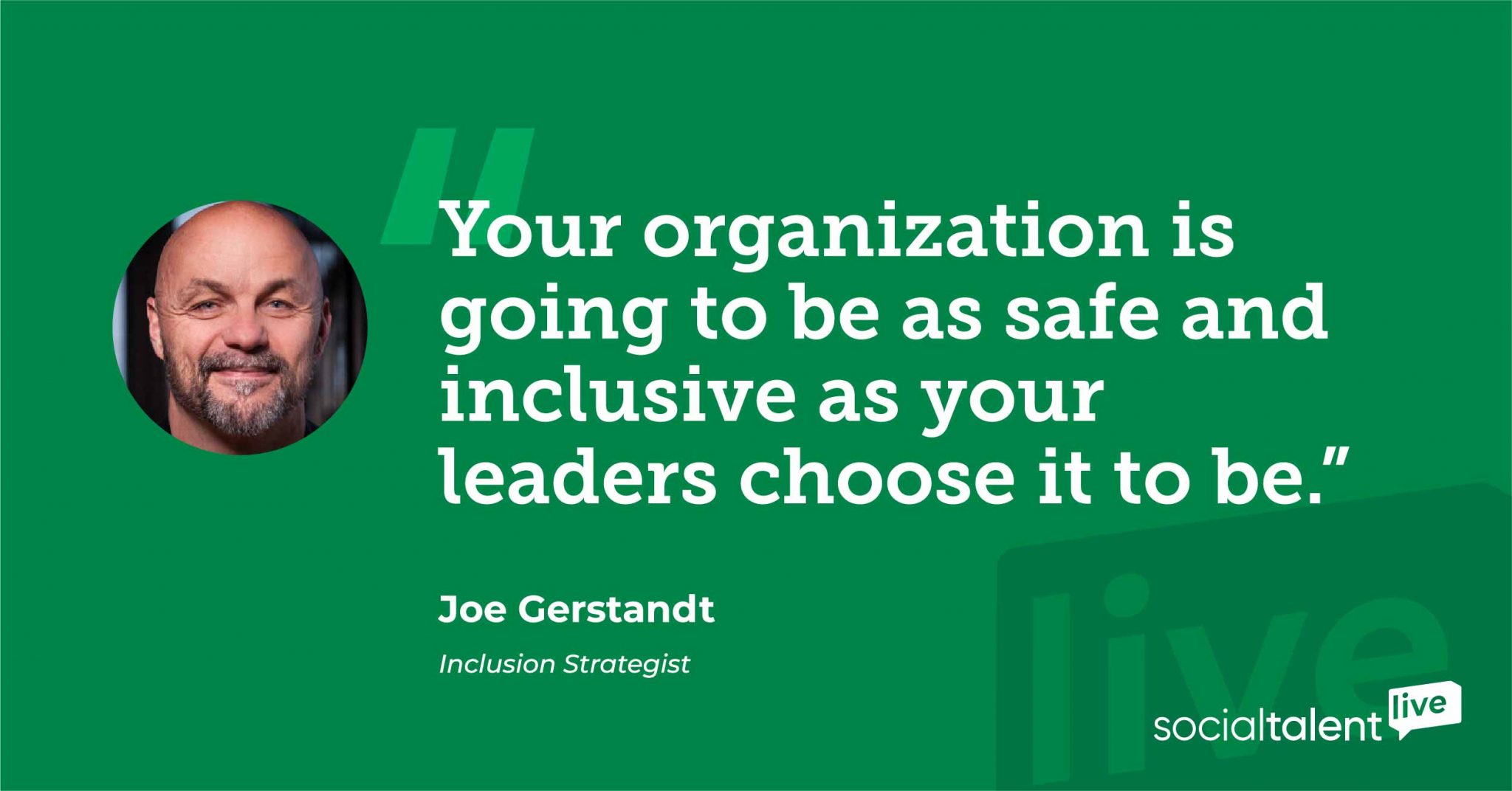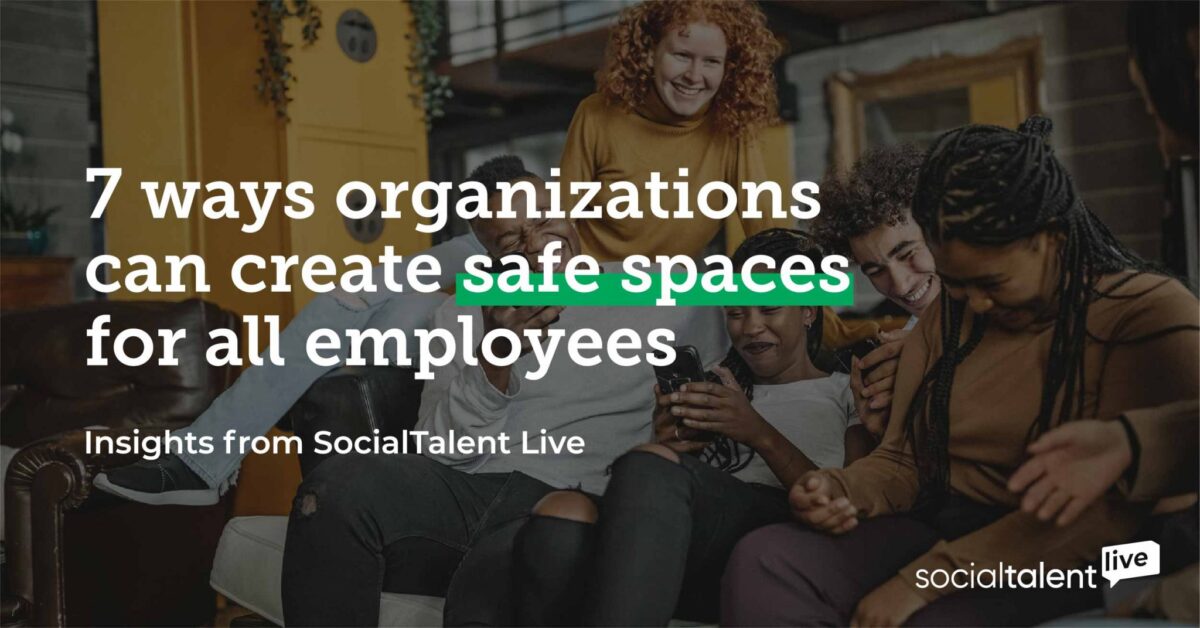On February 24th, we hosted SocialTalent Live: DEI and Creating Safe Spaces at Work. Bringing together experts and industry leaders from the diversity, equity and inclusion space, this event looked to get to the heart of psychological safety, both as a topic and critical organizatinal mission.
Over the course of the 90 minutes, through fireside chats and in-depth panel discussions, we unearthed a treasure trove of actionable advice and sage insight. Tips to enable companies to truly make an impact when it comes to fostering a culture of inclusion. Discover some of our favourites below.

1. Allies are need at all levels
In our first fireside chat, we spoke with Vikki Leach, the Diversity and Inclusion Director at Zalando. Here she impressed on us the importance of allyship in creating safe spaces. Without colleague support, it’s increasingly more difficult to call out non inclusive behavior. To demonstrate this, Vikki talked about Zalando’s DEI strategy which was launched publicly last year. This is designed to hold everyone accountable on a number of interventions that build safety and protection. And this is something they are constantly reviewing, questioning policies to ensure that there are no hidden biases. As Vikki says, “we have to proactively lift barriers to provide equity,” and this applies to everyone.
2. The role of leadership
Joe Gerstandt, a renowned inclusion strategist, summed up this importance perfectly: “your organization is going to be as safe and inclusive as your leaders choose it to be.” When talking about what elements create psychological safety, Joe listed the following:
- Role clarity
- Peer support
- Interdependence
- A learning orientation
- Positive leader relationships
And these are all things that leaders have massive oversight on – this work belongs to them more than anyone else. Vikki echoed these sentiments too, stating that leaders need to role model inclusive behavior and not just talk about it.
Want to learn more about what psychological safety is?
Read our dedicated blog post here.
3. The importance of measuring
Joanne Lockwood, Founder and CEO of SEE Change Happen, spearheaded this point: “what doesn’t get measured, doesn’t get done.” In any initiative to create safe spaces, you have to build this into the process. Whether it’s particular expectations with executives and teams, contracts or specifics outputs, you must track and measure the results to get an accurate overview of proceedings. And involve leaders in these processes too so they can fully understand what their impact is. The companies who are succeeding on this front make this a priority. “They understand what’s going on,” Joanne tells us, “they have a pulse of the organization and a playbook on what their journey is. Great companies show a tangible return.”
4. Don’t forget about education
As Joanna Fennell, VP, Global HR Business Partner at Flex, told us: “education is critical.” Often, organizations will think they’re creating an inclusive environment but because we all view the world through such different lenses, this may not actually be the case. “We need to understand what other people’s lived experiences are in order to comprehend difference.” This stems from education. And it must be active learning. So whether there’s measurable, individual goals around it or group dialogues, this all encourages more perspective and can aid in the creation of a safer work environment.

5. Teaching leaders to be accountable
Leaders have to become more accountable. But as Joanne Lockwood argues, this needs to be backed up with:
- Training
- Understanding
- Learning how to become a more supportive leader
We haven’t invested in leadership training in the way we have in other areas. And this is a mistake. Salma El-Wardany made the point that often there is an expectation that leaders just know everything, but often they have just evolved into the role without much guidance. So if psychological safety is to be made a priority, leaders must be sufficiently culturally conscious, have a working knowledge of DEI and be emotionally skilled. This then allows accountability and understanding to flourish.
6. Learn how to disagree well
It’s an oxymoron, but learning how to disagree well is a fundamental component of psychological safety. When talking about the work he does, Joe explained that he often focuses on some of the most difficult truths employees at all levels must communicate. He listed a few:
- Disagreeing with each other
- Sharing bad news
- Asking for help
- Admitting failure
- Sharing an idea
These are all potentially very risky topics, yet they’re also incredibly important. But if it’s not safe for these conversations to be had, they simply won’t happen. So let’s take disagreements for example, generally there are no written guidelines on how to disagree with someone in a company. There are no best practices or things to avoid. Joe advocates for organizations to start here. It’s an easy way to start building safety as it affects everyone. Having written instruction in this area can also help create traction in other areas and spur on more dialogue and action.
7. Become an interrupter
In the spirit of creating safer spaces, Hallam Sargeant, the Chief Inclusion and Diversity Officer at Avanade, wants everyone to be an interrupter. He says that: “sometimes we’re waiting for an executive or an aspirational role model to lead and I think the more we can step up and be interrupters, the more we can build psychological safety.” Everyone can be an inclusion and diversity leader, it doesn’t just sit with HR or specific teams. The more we can normalize having uncomfortable conversations in the open, the faster we normalize the topics of discussion too. He mentioned that in Avanade, for example, they’re encouraging more conversations around anti-semetic behavior, Islamophobia, violence against Asian-Americans, mental health, bullying and menopause in the workplace. The aim is to create an open ecosystem where inclusion becomes everyone’s job and there is license to talk about it.
Did you miss out on the event? Click this link to watch the full recording.
Our next SocialTalent Live event will take place on May 5th. Here, we’ll be talking about how best to engage and retain top talent in 2022. Sign up for the event here.
SocialTalent offers a variety of training and content for companies looking to expand their DEI learning. Get in-touch with us today to learn more.
The post 7 ways organizations can create safe spaces for all employees appeared first on SocialTalent.
